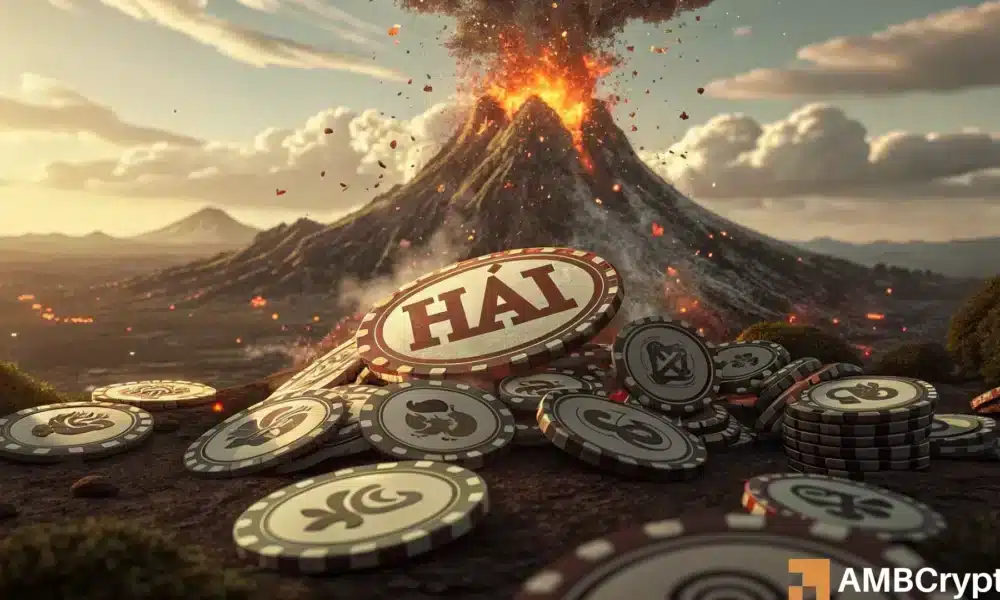- Hacken mint hit like a volcanic eruption, flooding the market and crashing the price by 55%.
- If bid walls couldn’t withstand this, what does that say about their real strength?
Hacken [HAI] just took a major hit after a likely private key compromise. Someone minted around 251 million HAI tokens on both Ethereum and BNB Chain, most likely by gaining access to the deployer wallet.
That move instantly tanked the price by 55%.
HAI was already having a rough quarter, struggling to break past the $0.026 resistance. This unexpected mint crashed the price all the way down to $0.009 at press time, dragging the RSI deep into oversold territory.


Source: TradingView (HAI/USDT)
On X (formerly Twitter), Hacken’s devs responded quickly, launching an internal investigation and urging HAI holders on both Ethereum and BNB Chain to halt all bridging activity.
But despite these assurances, the market’s reaction was anything but forgiving. The Exchange Supply of HAI surged to 10.36 million on the 20th of June, and then nearly doubled to a staggering 21.77 million just a day later.
This kind of inflow typically signals a surge in sell-side pressure, and in this case, it confirmed full-blown panic, exposing the lack of real underlying strength in the market.
Minted and melted: Hacken’s harsh reality check
Sure, the initial wave of panic was understandable. Security breaches tend to trigger knee-jerk reactions as fear overtakes logic.
But in Hacken’s case, the 55% drop, breaking even below the critical $0.09 level, delivered a sobering reality check. It highlighted a structural weakness in market confidence.
On-chain data backs this up. The Net Exchange Flow showed a 64 million token inflow, heavily outweighing outflows.
This sharp imbalance suggests that sell-side pressure continues to dominate, with liquidity piling onto order books faster than the market can absorb it.


Source: Santiment
According to AMBCrytpo, the lack of absorption underscores the absence of strong hands. In turn, revealing that the market’s foundation may be far more fragile than it appeared.







